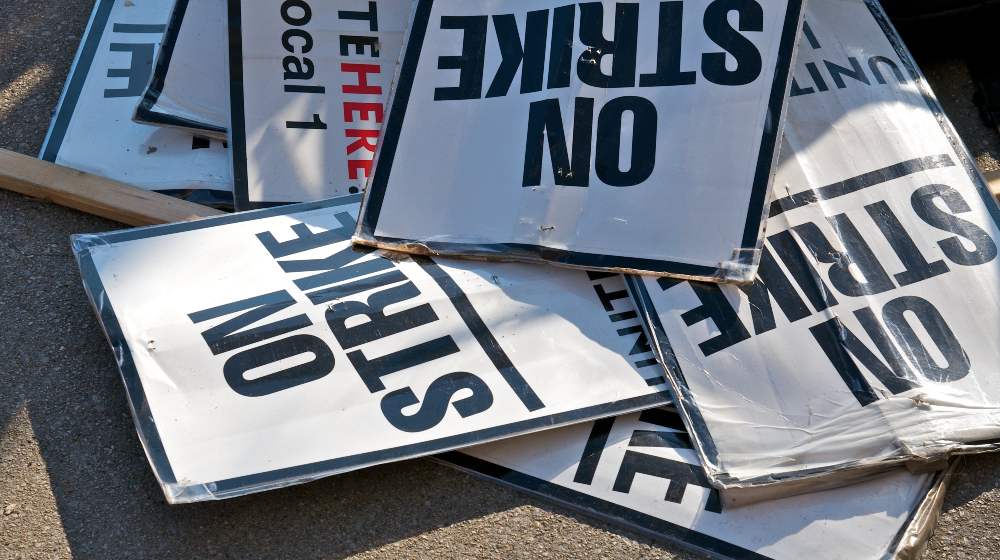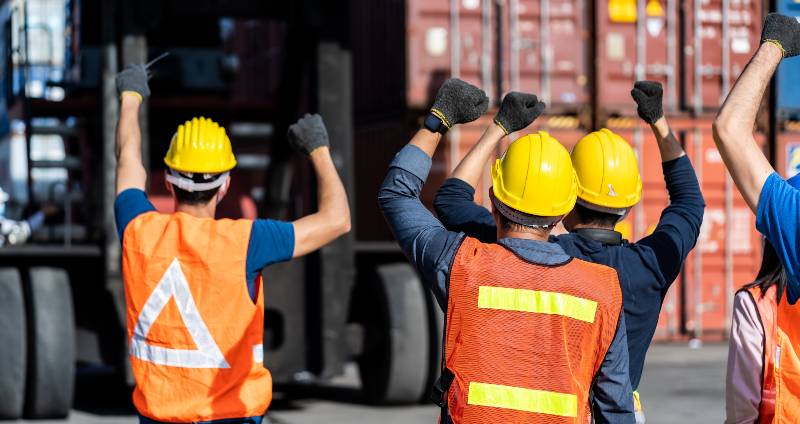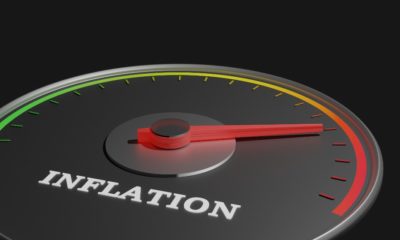News
US Labor Market Hit With Strikes as Workers Gain Leverage

The US labor market is in a state of flux recently. A record 4.3 million Americans quit in August. Meanwhile, hundreds of thousands of workers are going on strike to fight for increased wages, benefits, and support.
RELATED: Biden Forms Task Force To Promote Labor Unions
Labor Market in Chaos Due To Worker Shortage and Strikes

Last week alone, 10,000 John Deere workers went on strike while some 31,000 Kaiser Permanente employees staged a walkout.
Then, members of the Hollywood production industry threatened a strike for their 60,000 union workers. Only a late deal Saturday night averted a strike.
All in all, 2021 saw laborers going on strike against 178 companies. And, it’s only October. According to Cornell University’s School of Industrial and Labor Relations, 12 strikes involving 1,000 or more workers have already happened this year.
This number is higher compared to a more benign 2020. However, the figures are more on par with pre-pandemic years such as 2018 and 2019.
Great Resignation Phenomenon Affecting Labor Markets
Union officials and key economists say that the growing trend of striking works is an offshoot of the Great Resignation phenomenon.
Mass resignations by coworkers over pay and working conditions are paring down the labor market and slowing the economy. The demand for workers is sky-high, but the supply remains low.
Unfortunately, many companies struggle to meet higher demand for products given the pandemic. This gave worker unions new leverage. As a result, the threats of strikes increased.
Many union leaders expressed indignation against employers who failed to raise pay that matched their higher profits. Workers are similarly frustrated with wage growth that’s not keeping up with inflation rates.
In fact, the average US worker’s pay was 4% higher compared to last year. However, inflation rates are current at 5.4%, negating any increases.
Strikes Are Sending a Signal
AFL-CIO President Liz Shuler said that workers are aware of their leverage over the labor market. “The strikes are sending a signal, no doubt about it, that employers ignore workers at their peril.
I think this wave of strikes is actually going to inspire more workers to stand up and speak out and put that line in the sand and say, ‘We deserve better.’ ”
However, not all strikes panned out. Since April, about 1,000 Alabama miners remain on strike at Warrior Met Coal. At the same time, oil workers walked out against United Metro Energy.
Of the 14 workers who abandoned their jobs, eight were fired. Currently, the 1,4000 striking workers at various Kellogg Co factories remain on the sidelines for the third straight week.
White House Supporting the Labor Movement
Not surprisingly, the Democratic White House gave its support to striking workers. President Joe Biden issued a statement supporting the union driver organized earlier this year by Amazon workers.
Labor leaders also see Biden as a backer to their calls for higher wages. The Biden White House has been pushing continually to increase the national minimum wage to $15 an hour.
Surprisingly, both labor and management acknowledged their need for one another. Employers often prefer dealing with a time-bound strike than pay for higher costs brought by training and turnovers.
For workers, getting a new job might not be in their best interests. William Rodgers III, director of the Institute for Economic Equity, says all parties made the cost analysis.
“There’s a cost to searching and a cost to leaving your current employer, And maybe some of the desire to strike is predicated out of a level of loyalty that these people have been with this company for a good duration.”
Watch the TODAY video reporting that amid multiple strikes, the US labor crisis grows:
Do you agree that labor unions have leverage right now to demand more from employers? Should employers accept this as fact and give in to worker demands such as higher pay?
Let us know what you think. Share your thoughts below.















